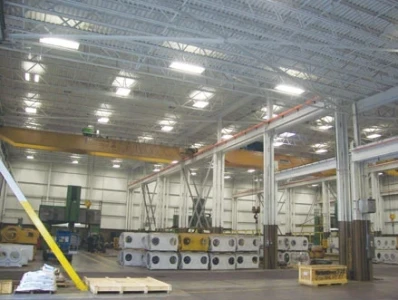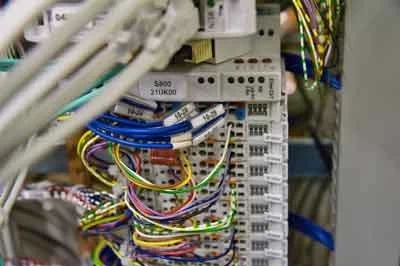Bridging the Gap: User Adoption and Training Strategies for BAS

Building Automation Systems (BAS) offer a plethora of advantages, promising enhanced energy efficiency, improved occupant comfort, and streamlined building operations. However, the success of a BAS hinges not just on technological prowess but also on user adoption – how effectively occupants understand and utilize the system's capabilities. This article explores the challenges associated with user adoption in BAS, and outlines various strategies to ensure occupants are empowered to leverage the system's full potential.
The Challenge of User Adoption: Addressing the Human Factor
Several factors contribute to the challenge of user adoption in BAS:
Complexity of Systems: Modern BAS can be intricate, with a myriad of features and functionalities. Occupants unfamiliar with the system might struggle to navigate the interface and utilize its controls effectively.
Lack of Awareness: Building occupants may not be aware of the BAS's presence or its potential benefits. Without proper communication and training, they might inadvertently override automated controls or misuse the system, compromising its intended function.
Resistance to Change: People often resist changes to their routines. Occupants accustomed to traditional manual controls might be hesitant to embrace a new system, leading to a lack of engagement with the BAS.
Limited Training Resources: Building management may underestimate the importance of user training, resulting in inadequate resources dedicated to educating occupants on BAS functionalities and proper utilization.
The Benefits of Enhanced User Adoption
Investing in strategies to improve user adoption can yield significant benefits:
Optimized Performance: When occupants understand the BAS and use it correctly, the system can function as intended, leading to optimal energy savings, improved comfort levels, and efficient building operations.
Reduced Costs: Proper user behavior can minimize unnecessary energy consumption and prevent accidental system misuse, ultimately lowering utility bills and maintenance costs.
Enhanced Building Performance: Occupant awareness of the BAS can facilitate data-driven decision making regarding building operations and potential upgrades. Feedback from occupants can help identify areas where further optimization might be necessary.
Increased Occupant Satisfaction: A comfortable and efficient building environment contributes to occupant well-being and productivity. BAS features like personalized lighting and temperature controls can lead to higher occupant satisfaction.
Strategies for Effective User Training and Adoption
Building managers can employ several strategies to foster user adoption and ensure occupants are equipped to leverage the BAS effectively:
Pre-Implementation Communication: Before deploying the BAS, engage occupants through communication channels like newsletters, building announcements, or town hall meetings. Explain the system's purpose, benefits, and potential impact on their daily routines.
Comprehensive User Training: Develop user training programs tailored to the specific functionalities of the BAS. Offer multiple training formats (e.g., in-person sessions, online tutorials, video guides) to cater to different learning styles. Training should be clear, concise, and cover basic operation, troubleshooting common issues, and energy-saving practices.
User-Friendly Interface: The BAS interface should be intuitive and user-friendly. Simple navigation, clear visuals, and easy-to-understand prompts can minimize the learning curve and encourage user engagement.
Ongoing Support and Feedback: Provide ongoing support through help desks, FAQs, or dedicated support personnel to address occupant questions and concerns. Actively seek feedback from occupants about the BAS to identify areas for improvement or additional training needs.
Gamification and Incentives: Consider exploring gamification strategies to encourage engagement. Building dashboard visualizations or leaderboards showcasing energy savings achieved through BAS utilization can foster a sense of competition and motivate occupants to optimize their energy consumption.
Building a Culture of Sustainability: Promote a culture of sustainability within the building by highlighting the BAS's role in energy efficiency and environmental responsibility. Regular communication can raise awareness about the environmental impact of occupant actions and encourage responsible use of the BAS.
Integration with Other Systems
For a truly seamless user experience, consider integrating BAS with other building management systems. This can include:
Mobile Applications: Developing mobile apps for BAS control empowers occupants to adjust settings like lighting or temperature on the go, even when outside the building. This enhances convenience and user engagement.
Building Management Dashboards: Real-time dashboards displayed in common areas can promote transparency and raise occupant awareness about building energy consumption patterns. Visualizing the impact of occupant actions can encourage energy-conscious behavior.
Sensor Integration: Integration with occupancy sensors can automatically adjust lighting and HVAC based on space utilization, ensuring optimal energy usage and occupant comfort.
Empowering Users for a Smart Building Future
User adoption is a critical component in unlocking the full potential of a BAS. By investing in targeted training programs, creating a user-friendly interface, and fostering a culture of sustainability, building managers can empower occupants to become active participants in optimizing building performance.
The Role of Building Management
Building management plays a crucial role in driving user adoption and ensuring the long-term success of BAS implementation. Here are some additional considerations:
Leadership Commitment: Strong leadership commitment from building management is essential. Publicly endorsing the BAS and encouraging its use by occupants sends a clear message about the importance of the system.
Integration with Building Operations: Building operations staff should be thoroughly trained on the BAS functionalities and troubleshooting procedures. Their knowledge and expertise are crucial for providing effective user support and ensuring smooth system operation.
Data-Driven Decision Making: BAS data can be used to identify areas where user behavior might be impacting energy consumption negatively. Targeted training initiatives can be designed to address these specific areas, leading to more focused and effective user engagement.
Continuous Improvement: Regularly evaluate user feedback and system performance metrics to identify areas for improvement. This can involve refining training programs, updating user guides, or even making adjustments to the BAS interface based on user needs.
The Future of User-Centric BAS Design
Looking ahead, BAS design is moving towards a more user-centric approach. Here are some emerging trends:
Personalization: Future BAS may offer personalized features that cater to individual occupant preferences. For example, BAS could learn individual temperature settings or lighting preferences for each occupant, automatically adjusting settings upon arrival or departure.
Artificial Intelligence (AI): AI integration in BAS can offer context-aware automation. AI can learn from occupant behavior patterns and building usage data to optimize settings and anticipate occupant needs, further enhancing comfort and reducing energy consumption.
Advanced User Interfaces: Expect advancements in user interfaces with features like voice control, gesture recognition, or augmented reality overlays providing occupants with intuitive and convenient ways to interact with the BAS.
A Collaborative Future for Building Automation
Building automation represents a significant leap forward in creating intelligent and sustainable buildings. However, unlocking the full potential of BAS requires a collaborative effort. By prioritizing user adoption through targeted training, user-friendly interfaces, and fostering a culture of sustainability, building managers can empower occupants to become active participants in optimizing building performance. As technology continues to evolve, we can expect user-centric design principles to take center stage, creating a future where BAS seamlessly integrates with occupant behavior, leading to even more efficient, comfortable, and sustainable building environments.









